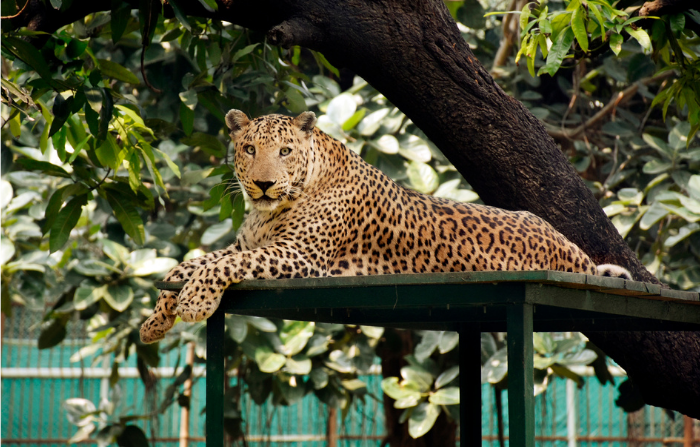- Friday, April 26, 2024

By: Shubham Ghosh
LEOPARD attacks in the north-western suburbs of Mumbai, India’s financial capital, like the Aarey Colony are on the rise and there have been eight reported cases of the animal attacking humans in the past one month, sparking an outrage.
Round 50 leopards live in the Sanjay Gandhi National Park (SGNP) which is located in the city’s northern part and despite the area being walled, the animals climb out and are often seen in the congested surrounding neighbourhoods looking for food and frequently attacking the city’s street dogs, The Telegraph, the UK, reported.
ALSO READ: Men throw birthday cake at chasing leopard to escape death in Madhya Pradesh
The leopards’ foray into human settlements has brought the focus back on animal-human conflict, something that remains a hot debate in the world’s second-most populous nation. The SGNP plays a vital role in preserving Mumbai’s historic leopard population, which is endangered now, thanks to poaching and destruction of habitats, but the animals’ attacks on human beings have raised a serious question over safety of those living near the park as well.
In 2018, a report brought out by the Indian government found that there are less than 13,000 leopards left in the country, marking a 90 per cent reduction since 1900.
“The forests of the SGNP provide an ideal habitat for the leopard. Besides its administrative boundary, the SGNP has connectivity with adjoining forests that allows leopards to migrate without disturbances,” Dr Bivash Pandav, director of the Bombay Natural History Society, told The Telegraph.
In 2002, as many as 25 cases of leopard attacks were reported but it was called an anomaly since new leopards from surrounding forests resulted in competition for food in the SGNP, the report added.
The situation improved after a multi-member panel was set up featuring local political leaders, conservationists and police. An improved prey base in the SGNP was cited as the reason. Only a few attacks were recorded since then and one particularly aggressive leopard was blamed for the attacks in 2017.
The authorities have again blamed a single leopard for this month’s attacks but it was reported that the animal still roamed free and that left people in panic.
On social media, a couple of CCTV videos – one of a 69-year-old woman fighting a leopard with a stick outside her home and another of a leopard leaping on and narrowly missing two persons on a speeding motorcycle – were being widely circulated.
These have added fuel to the local people’s fury who have demanded removal of the leopards from the national park to a location away from the residential zones.
Others have blamed the authorities saying the latest animal attacks could have been avoided had they listened to warnings from residents that leopards were more regularly cited closer to their homes. They also accused the authorities of not taking steps against people who built illegal hotels, office blocks and houses in the territories of the big cats.
However, there are also others like tribals who support the leopards and feel they are protectors of the forests.
“I do not fear the leopards because they are like a member of the family to us, we see them as the protectors of the forest,” Kavita Padher, a tribal member, told the news outlet.
SNGP and officials of Indian Forest Service did not respond to requests for comment from The Telegraph.
![]()